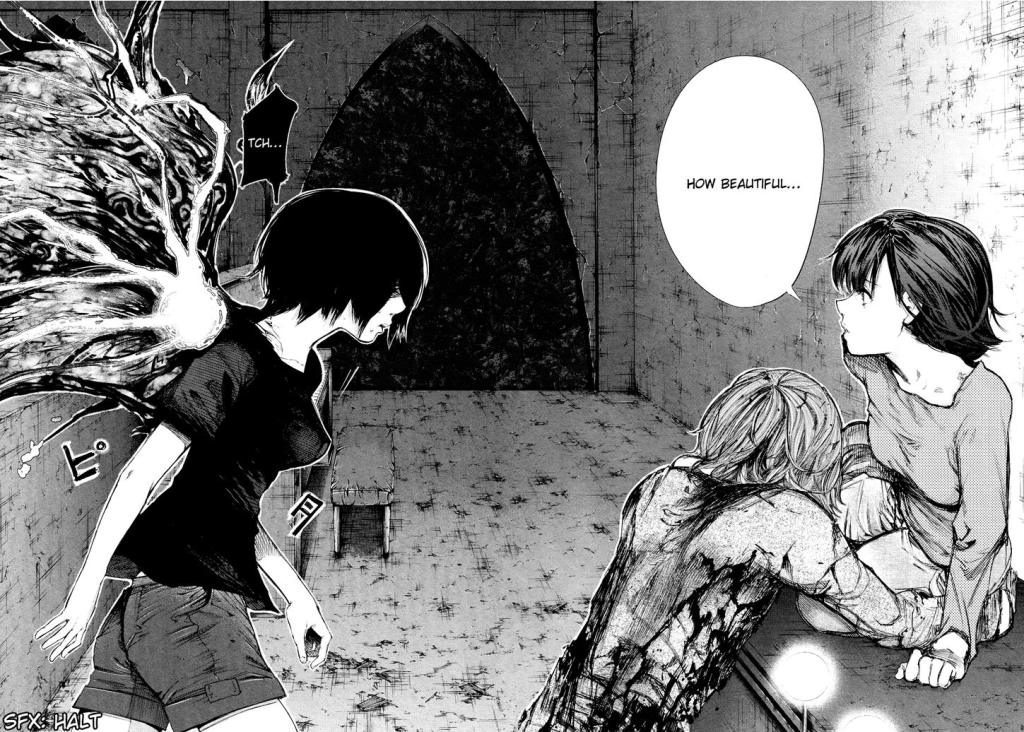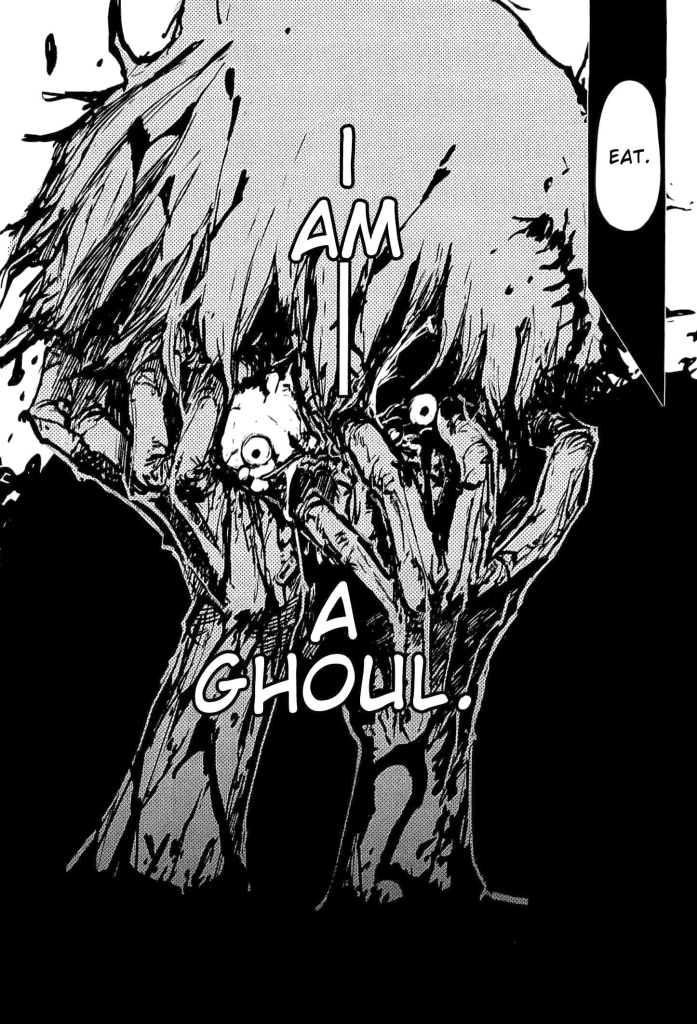Sui Ishida’s Tokyo Ghoul is a masterclass in psychological horror and existential drama. Set in a version of Tokyo where flesh-eating ghouls live among humans, the story follows Ken Kaneki, a quiet bookworm whose life is shattered after a date gone wrong turns him into a half-ghoul. From that moment, Kaneki is forced to navigate a brutal world where survival means sacrificing pieces of his humanity.
At its core, Tokyo Ghoul is about identity, morality, and the blurred line between good and evil. Kaneki’s transformation is not just physical—it’s philosophical and constantly challenges readers to reconsider what defines a monster. Ghouls are shown with nuance: they love, grieve, and protect their own. Meanwhile, humans—especially the CCG investigators—often act with cruelty in the name of justice. This moral ambiguity is the beating heart of the series.

What’s most compelling about these books is Kaneki’s arc – descending into madness and being reborn as a reluctant warrior. His internal struggle is raw and painful, and his evolution feels earned. Supporting characters like Touka, Amon, and Jason add layers of tension and emotional weight. Each character is written with depth, often revealing tragic motivations that make their actions heartbreakingly understandable.
Ishida’s artwork is hauntingly beautiful. The use of shadows, stark contrasts, and expressive character designs elevate the emotional intensity of each scene. The ghoul kagune (an organic predatory organ) are grotesque yet elegant, embodying the duality of beauty and horror. The visual storytelling is as powerful as the dialogue, often conveying Kaneki’s inner torment without a single word.

One thing I found frustrating was that Tokyo Ghoul can be difficult to follow at times; Ishida frequently shifts tone, pace, and narrative focus—moving from intimate psychological interiority to brutal action, jumping across times and perspectives, and experimenting with visual layouts that demand close attention. The series also introduces complex organizations, morally ambiguous factions, and sudden thematic turns that aren’t always explained immediately, so plot threads and character motivations can feel fragmented until later chapters reconcile them. Speaking with a friend who was a fan of the series I learnt that this isn’t an uncommon feeling and that the series rewards patient, attentive reading. The more closely you track visual cues, recurring motifs, and subtle dialogue, the more the story’s structural decisions make sense and its emotional payoffs land.
I would be remiss of me to talk about the manga without mentioning it in contrast to the anime. I feel that, whilst the anime introduced Tokyo Ghoul to a global audience, it didn’t quite deliver the full emotional and narrative impact of the books. The anime’s pacing and omissions leave gaps that the manga fills with rich character development and thematic depth. As such I’m going to be one of those reviewers that says “the books are better”
Tokyo Ghoul is not just a horror story—it’s a tragic symphony of pain, identity, and survival. It’s a must-read for anyone who appreciates dark fantasy with emotional resonance. Whether you’re drawn to its visceral action or its philosophical undertones, Tokyo Ghoul will leave you haunted—in the best possible way.